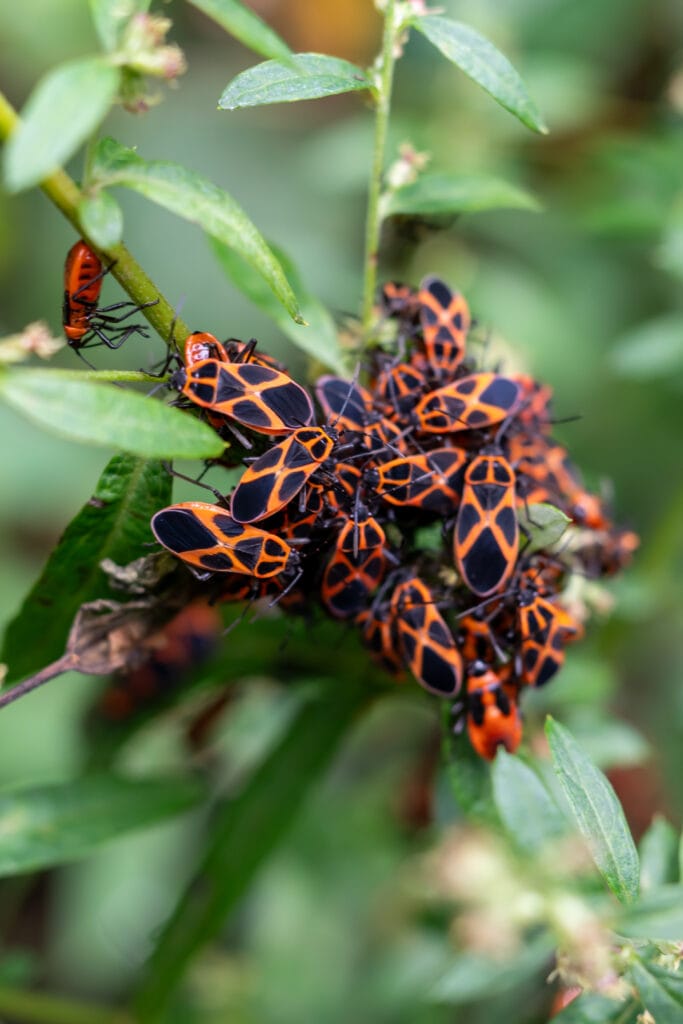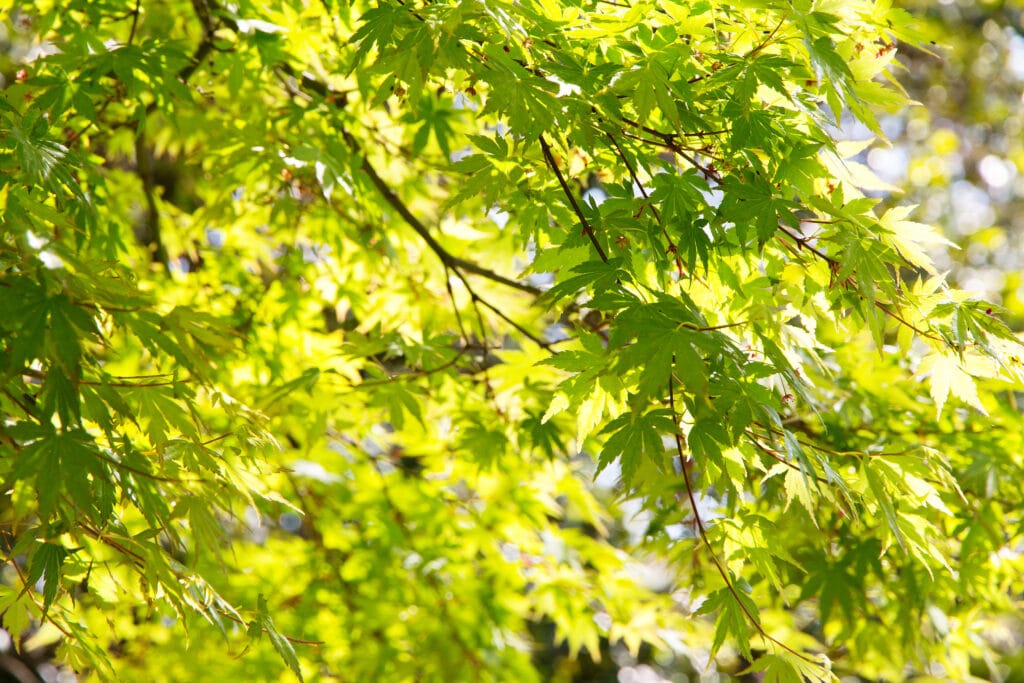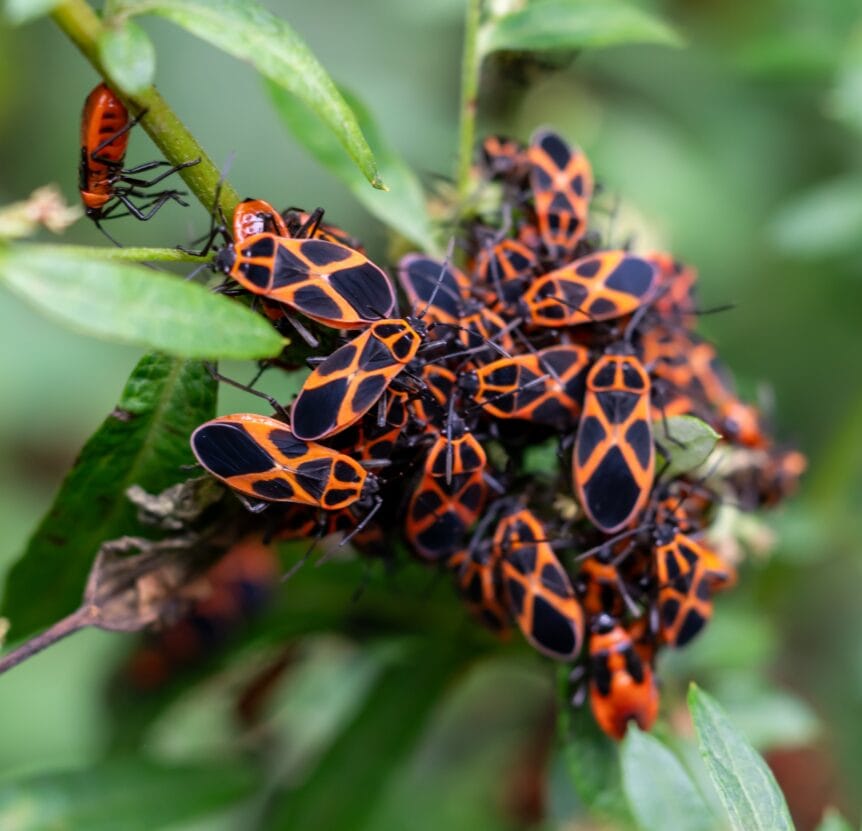The eastern boxelder bug, named after its preferred tree, is a North American bug that feeds and breeds on a host tree. These bugs can be considered a pest if they invade your home during the fall as they look for a warm place to spend the winter.
Boxelder Biology

The life cycle of a boxelder bug includes three stages: egg, nymph, and adult. Adult bugs will lay small, reddish-brown eggs on host trees in the spring. The color of the eggs allows them to blend in with the tree. When the eggs first hatch, the resulting young nymphs are bright red with their coloring darkening as they grow. In the summer, the nymphs will molt several times as they develop into adult bugs. Adult boxelder bugs are about ½ inch long and are dark brown or black in color with red markings and red eyes. Their wings overlap to lay flat atop their bodies. During the summer, you can see boxelder bugs at all stages of their development.
Habitat in Western New York
Boxelder bugs will claim a host tree where they get food and lay their eggs. Their preferred tree is the female boxelder tree, which they are named after, but they will also feed on maple trees, ash trees, and stone fruit trees. On their host tree, the bugs feed on seeds, leaves, and ripe fruits such as apples, peaches, and plums. In the summer, they will lay their eggs on the trees, where the nymphs will hatch and feed on seeds and sap. You are more likely to see boxelder bugs during hot, dry summers that are followed by warm springs.

Eastern boxelder bugs are native to North America and live in the Eastern United States, Southern Canada, Mexico, and Guatemala. Eastern boxelder bugs started appearing in Chile in 2020. It is thought that the widespread planting of maple trees in the country has led to the boxelder bug invasion. Since they aren’t native to that region, they are becoming an invasive species, as the local ecosystem hasn’t evolved to accommodate the bugs.
Overwintering
During the fall, adult boxelder bugs will leave their host tree to seek out a warm sheltered place to overwinter. Overwintering is a strategy that some insects use to survive the cold winter months. Boxelder bugs will enter a dormant state in a warm shelter where they will wait out the winter and then re-emerge in the spring. The bugs will overwinter either in an outdoor hiding spot like piles of rocks, logs, or leaves, or in a warm building. Unfortunately, this sometimes means that the bugs will form large congregations on homes, seeking an entry point. If they can find a way in, usually through doors, windows, or cracks in the foundation, they may hide behind siding or inside walls during the winter.
Sometimes a home’s heating system or warmer winter days may trigger the bugs to wake up early, thinking that spring has arrived. When spring does come, the bugs will wake up from their inactive state and try to return to their host trees where they will start feeding and breeding again. During spring and early summer, they will feed on plants and seeds on the ground and then during mid-summer they will lay their eggs on female boxelder trees. However, if they have overwintered inside a building, they may sometimes remain trapped inside.
Issues with Boxleder Bugs in Buffalo, NY
Boxelder bugs aren’t poisonous and are considered more of a nuisance than a danger. While they don’t usually cause any significant damage to plants or their host tree, they can become an issue if they gather in large numbers near your house before overwintering. As they seek a warm place to stay, they have a tendency to gather on the sunny sides of buildings in the fall. If they find an entry point, they will stick around for the winter. Boxelder bugs only breed on their host trees, so their numbers won’t grow indoors unless more enter in during the fall. However, they can be a nuisance if they infest your home. The bugs can stain surfaces and release an unpleasant odor when crushed. They will also leave behind a pheromone that attracts more bugs.
How to Manage
Usually, boxelder bugs only cause a problem if they invade your home. If the bugs are frequently entering your home, here’s some strategies you can try:
Sealing entry points
To prevent boxelder bugs from getting in your home, try using caulk or a foam sealant to seal off any entry points. Look for any cracks around windows or doors and repair any torn screens. Fill in any gaps under the siding or around pipes or utility lines. You can also cover attic and basement vents with a fine-mesh screen. However, be careful not to seal everything air-tight!
Vacuuming
If you see one or more boxelder bugs in your home, it is best to vacuum them up, as squishing them can leave stains. Once the bugs are dead, you can dispose of the vacuum bag.
Eliminating hiding spots
The bugs may overwinter in outdoor shelters as well. Look for any places that the bugs could be hiding near the house such as rock piles, boards, or leaves. Spraying the bugs with water can be an effective strategy to get rid of them.
Eliminating host trees
Since boxelder bugs feed and reproduce on a host tree, removing the tree can effectively control boxelder bug populations in your yard (though the bugs could still migrate in from a neighboring tree). The bugs prefer female trees, which produce seeds. If you can’t or don’t want to remove the host tree, you can also try to clear fallen seeds from beneath the trees with a broom or vacuum.
Contact a professional
If your boxelder bug population has gotten out of control and you need more help, don’t hesitate to contact a professional bug control expert. It is not recommended for you to use chemicals for managing boxelder bugs yourself, as the runoff can be dangerous. If chemical applications are needed, it is best to leave it up to a professional to help. They can help you effectively take care of your boxelder bug problem.
More from Bugg Control, Inc.
Check out information about “buggs” and more to be informed about keeping your home safe from pests. If you have questions or want pest control expertise, contact us today!
Stay up-to-date by following our socials: Facebook | X | YouTube

